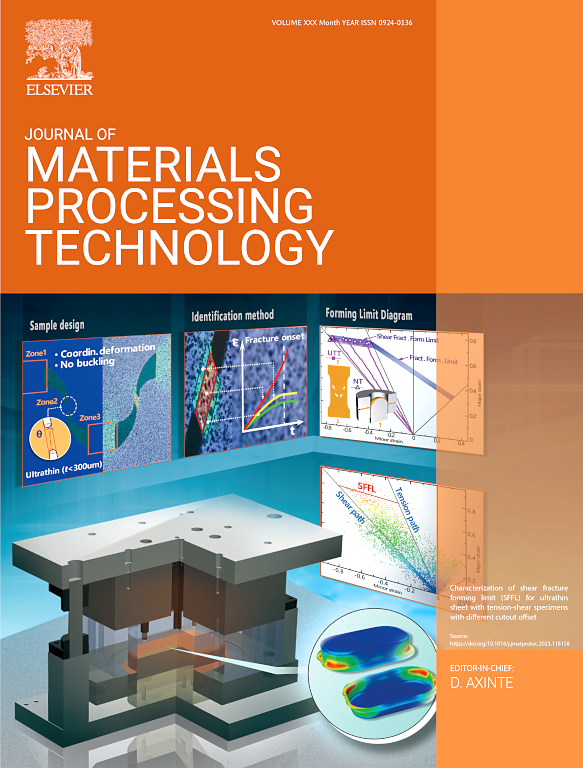Adaptive diamond texturing of micro/nano-structured surfaces enabled by hybrid control of 2D tool position and cutting force
IF 6.7
2区 材料科学
Q1 ENGINEERING, INDUSTRIAL
Journal of Materials Processing Technology
Pub Date : 2025-01-22
DOI:10.1016/j.jmatprotec.2025.118739
引用次数: 0
Abstract
Vibration-assisted diamond texturing (VADT) has recently gained prominence as an effective method for producing micro- and nanostructured functional surfaces, offering considerable application potential. Despite its advantages, the accuracy of surface formation in VADT, governed by the replication of cutting trajectories, must contend with the unavoidable inaccuracies inherent in the manufacturing systems. To address this issue and enhance the process robustness, this paper firstly proposes a novel adaptive diamond texturing approach that integrates a hybrid control of the 2D tool position and cutting force to precisely track the desired material removal state. A bidirectional mapping relationship between the actual cutting trajectory and dynamic cutting force has been established, enabling real-time decoupling of the transient material removal state. Furthermore, an objective function for optimal 2D tool compensation displacement has been analytically defined to track the desired cutting force and surface topography adaptively. Experimental validations conducted on freeform and inclined surfaces demonstrate the high consistency of the textured microstructures and precise tracking of the desired material removal state and 2D cutting force. Additionally, this paper highlights the superiority of the proposed hybrid control approach over conventional tool position-based and thrust force-based servo controls. This study advances the scientific understandings of the surface formation principle and the significant impacts of tool servo position and machining system errors on dynamic cutting force in VADT processes. It also explores the potential of force servo-based control methodologies to enhance process robustness, independent of manufacturing system errors and the characteristics of cutting force.
求助全文
约1分钟内获得全文
求助全文
来源期刊

Journal of Materials Processing Technology
工程技术-材料科学:综合
CiteScore
12.60
自引率
4.80%
发文量
403
审稿时长
29 days
期刊介绍:
The Journal of Materials Processing Technology covers the processing techniques used in manufacturing components from metals and other materials. The journal aims to publish full research papers of original, significant and rigorous work and so to contribute to increased production efficiency and improved component performance.
Areas of interest to the journal include:
• Casting, forming and machining
• Additive processing and joining technologies
• The evolution of material properties under the specific conditions met in manufacturing processes
• Surface engineering when it relates specifically to a manufacturing process
• Design and behavior of equipment and tools.
 求助内容:
求助内容: 应助结果提醒方式:
应助结果提醒方式:


